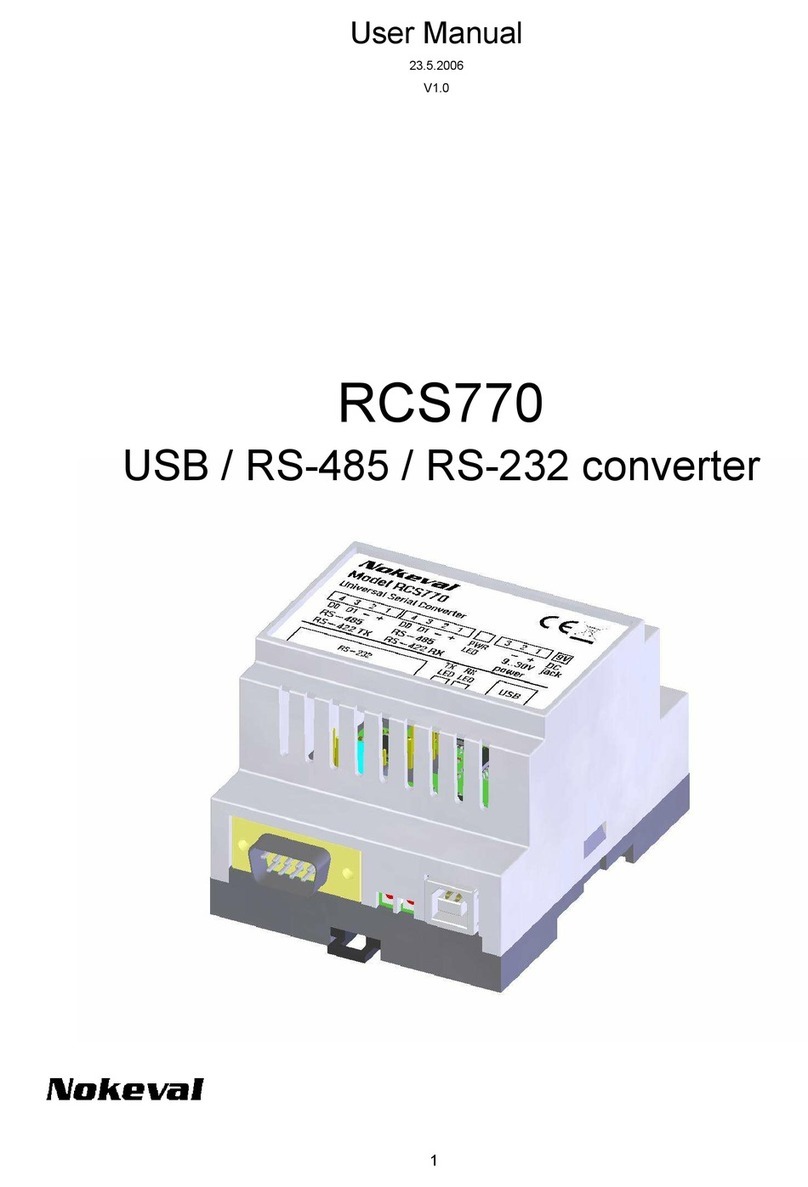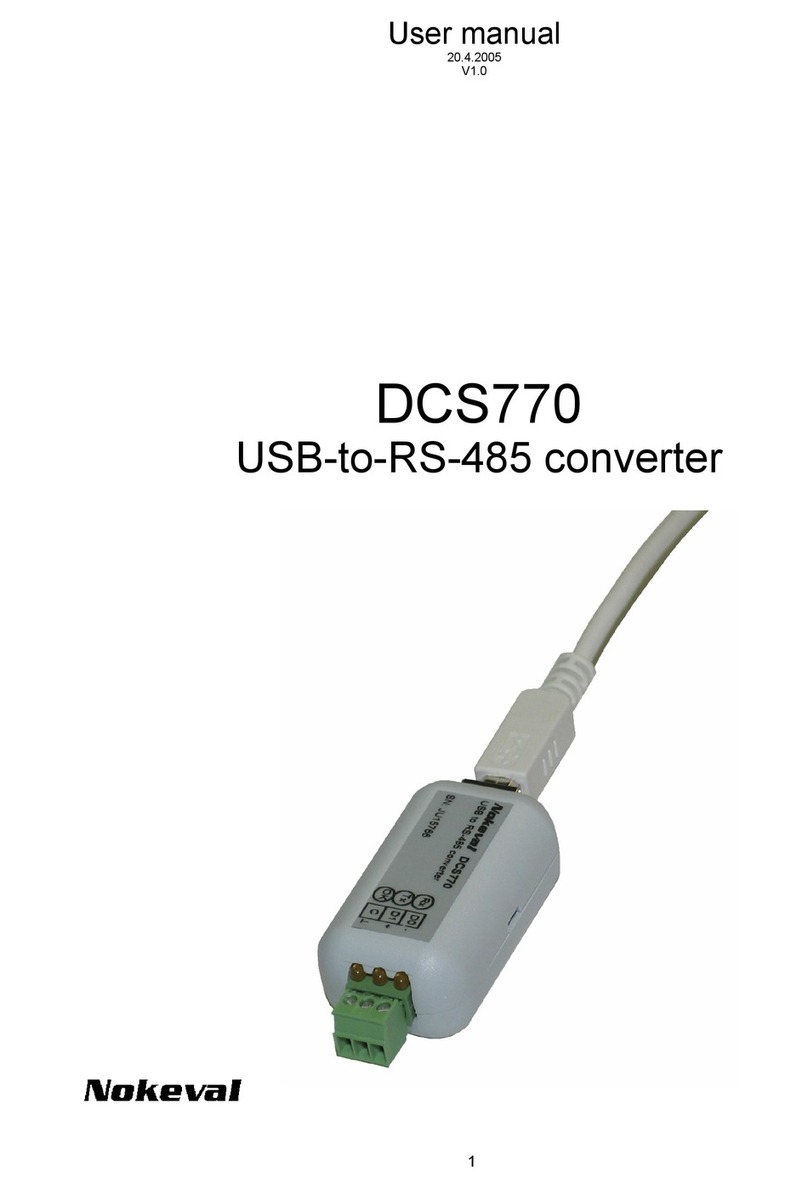Power options
DCS771B can provide the supply voltage
for the bus devices. It can obtain this
power with three ways:
Fro the USB
Jumper JP1 is set in position ”Auto” and
the voltage selected with JP2 (options are
10 or 24 ). The maximum current is
stated in the specifications.
External power supply
The external supply is connected in
connector J1. Jumper JP1 is
recommended to be set in position
”External”. The voltage and current depend
on the external power supply – the
DCS771B only routes it from a connector
J1 to J2.
External Mascot
JP1 is recommended to be set in
”External”. DCS771B routes the Mascot
voltage from connector J3 to connector J2.
When J5 is in the Auto position, DCS771B detects if there is an external power supply connected in J1 or J3,
and if not, then generates the supply voltage to J2 from the USB. In External position, DCS771B never uses
USB power.
To open the case and access the jumpers, unscrew the two screws in the bottom.
Ter inating and fail-safing
If the bus is longer than some dozens of meters or if the highest baud rates are used, the bus must be
terminated in order to avoid reflecting the signal from the bus ends. The reflections will cause bit errors.
The bus topology should be daisy-chain, although short stubs (a couple of meters) are acceptable. The first
and the last device on the bus should be terminated. Most RS-485 devices provide some means of
terminating without external components, typically closing a jumper or a DIP switch.
Fail-safe resistors are needed to ensure the correct state on the bus when nobody is transmitting. They
make at least 0.2 voltage between lines D1 and D0. Modbus specification recommends that the bus has
only one device fail-safing. So it is natural to have the fail-safe on the master of the bus.
DCS771B can do both terminating and fail-safing with jumper settings. Their default setting is on. They may
be changed by opening the case – unscrew the two screws in the bottom.
The ter ination provided by DCS771B is an AC termination (there is a resistor 110 ohms and a capacitor 1
nF in series). It is enabled by closing the middle jumper on J7. It should be enabled, if DCS771B is the first or
the last device on the bus.
The fail-safe resistors are 500 ohms to 5 , as recommended in Modbus specifications. They are enabled
by closing the first and the third jumper on J7. They should be closed, if there is no other fail-safing devices
on the bus.



























